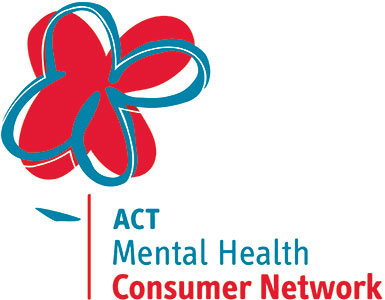History
A brief history of the Network
In 1997 a number of consumers decided to form a Consumer Group after attending a consumer representation workshop sponsored by the Mental Health Foundation. A committee was formed and meetings were held monthly.
HealthPACT funded the group with $5,000 per year and a consumer worker was appointed for a few hours per week to undertake secretarial work. In order to gain further funding a group of volunteers worked on a consumer-focused constitution for the organisation to be incorporated. The ACT Mental Health Consumer Network was incorporated on 22 July 1999. The Network was born!
The Network received funding from the Commonwealth government administered by the ACT Government in 2000. In the early stages of funding the Network was co-located at the Mental Health Foundation office in the old Griffin Centre. Originally the Network had three part-time workers. Outputs required from the Network under the funding agreement were information, referral and representation. For this purpose the Network also acted as a drop-in centre for mental health consumers. This required a new staffing structure and so an Executive Officer, a Project Officer and a bookkeeper were employed in January 2001.
The Network lobbied for a ‘Clubhouse’ model in its earlier days; a consumer space where mental health consumers could access and share resources. With the commencement of The Rainbow, the Network’s focus shifted to consumer representation.
The Network went through a difficult period at around this time and it was decided that these difficulties could be addressed if the Network was auspiced by another organisation. ACT Council of Social Service (ACTCOSS) began auspicing the Network in July 2003 with a view that this would be done by a more suitable organisation in the future. This arrangement included staff mentoring, support management and financial management. The arrangement between ACTCOSS and the Network ended on 30 March 2004 when the Network became fully independent once more, after an overwhelming vote by the Committee of the time following the Annual General Meeting (AGM) in November 2003.
In 2005 the Network decided to work toward a broader understanding of representation and adopted principles of systems advocacy. From then onwards the Network worked towards building a sustainable foundation for consumer advocacy in the ACT. The Consumer Representative Program (CRP) – the Network’s core activity – has continued to grow and expand, as have the Network’s other activities. In 2007 the Network negotiated a recurrent three-year funding contract (2007-2010) with ACT Health.
From the 2008-09 financial year the Network’s core funding was increased to enhance the Network’s capacity to support the CRP and provide other peak services for mental health consumers in the ACT. This led to significant growth in the organisation.
In 2009 the Network’s staffing team was expanded to include a coordinator employed to respond to government policy and legislation, as well as another to coordinate the CRP. These two roles work closely together to ensure consumers’ voices are heard at all levels of the ACT government.
Following extensive consultation with members about training needs, beginning in 2010 the Network built the Advocacy and Representation Training (ART) program through the assistance of a skilled project officer and several dedicated members. This was made possible through the provision of two small funding grants from the Department of Disability, Housing and Community Services. On completion the Committee of the time endorsed the creation of a new position, Community Education Coordinator, and the Project Officer accepted this role and became a permanent employee of the Network who facilitates the ART program throughout the year. This program replaces similar training that the Network purchased from the NSW Institute of Psychiatry on an annual basis until 2010.
At the end of 2010 the Network relocated to a workspace almost double the size it had before. This move enabled the Network to have a large separate Members Area where members attend Drop-In time on a regular basis over lunchtime, as well as the capacity to hold meetings which significantly decreased meeting room hire costs. This area is also made available where possible to community groups to hold meetings and training leading to greater networking and collaboration in the community sector.
In 2011, the Network underwent a complete upgrade of its Constitution which had been sorely needed for a number of years. This extensive project was made possible through the ongoing assistance of a dedicated group of members who took time each week to attend meetings and forums working through the document piece by piece. The final result was a professional foundation document that the Network could use to move forward and begin to rebuild its internal policy structure.
The Network experienced some significant structural change towards the end of 2011. The Committee of the time recognised the extensive efforts and talents of the then Policy and Participation Coordinator and created the role of Program Manager to oversee the Network’s program areas while continuing to coordinate policy response efforts. The Program Manager also has the role of supporting the staffing team, and acting as Executive Officer when required.
Internal policy became one of the Network’s significant projects following completion of the new Constitution. The staffing team and the Board (name changed from ‘Committee’ under the Constitution) continue to work on this project to improve and enhance the Network’s policy documents as part of a continuous improvement process.
